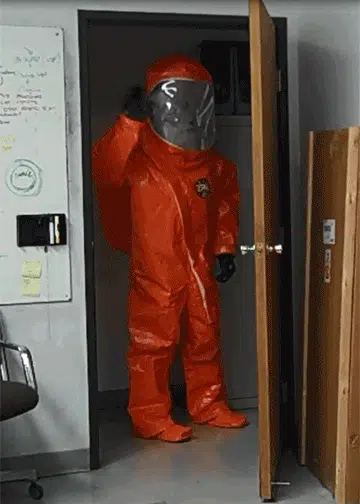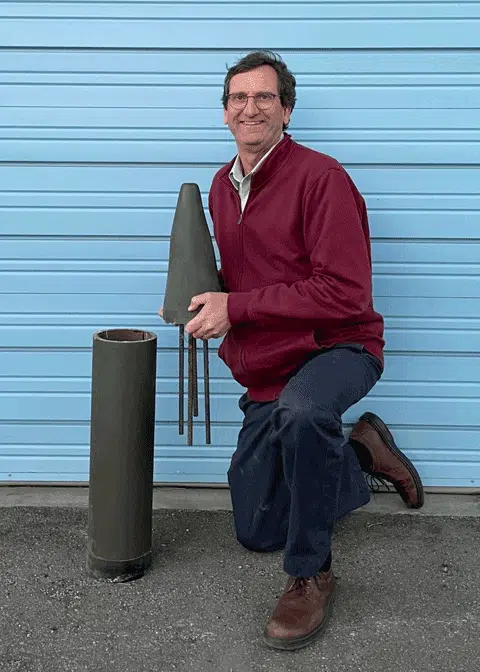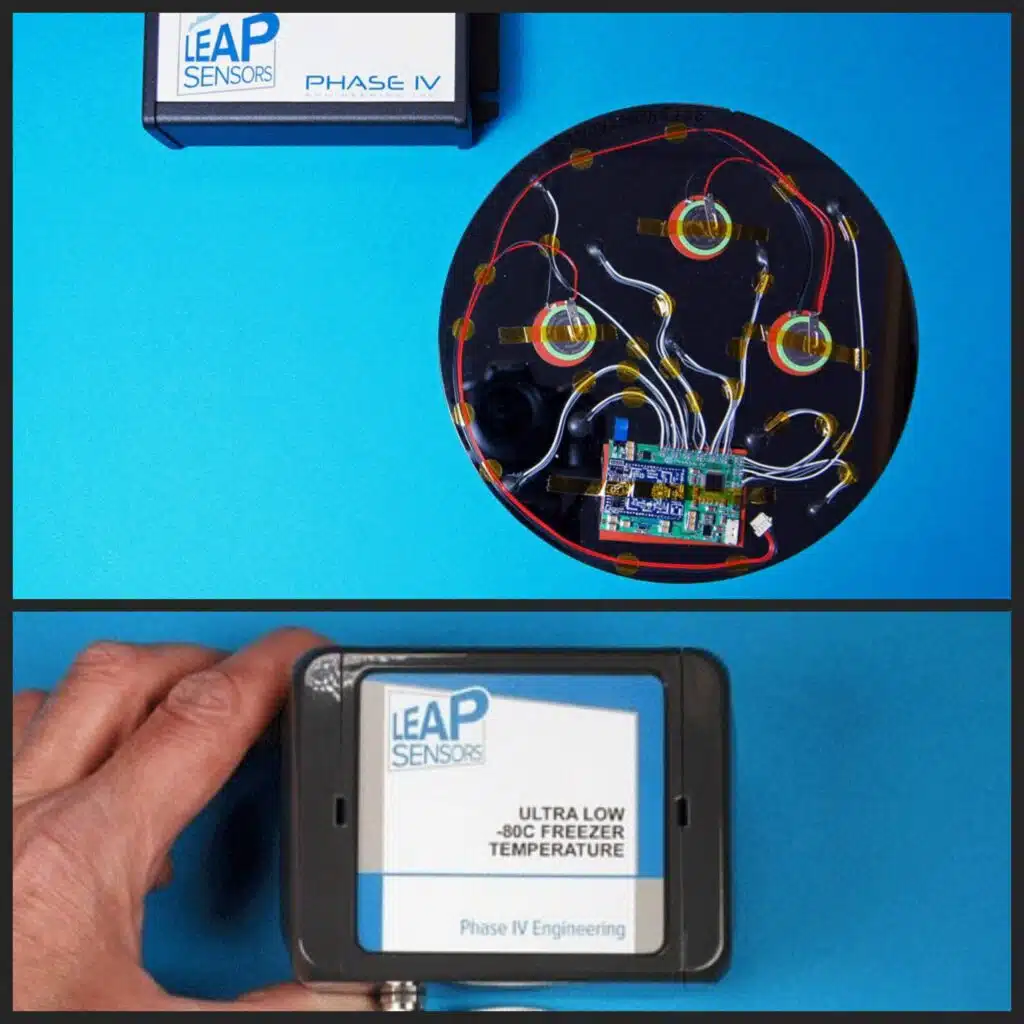
What does a typical day at work look like for you? Have you ever seen things like someone wandering the halls of your offices looking like an invader from outer space, a la Marty McFly in Back to the Future? Probably not, but at Phase IV, it’s just another day at the office. In our thirty years of wireless sensor design, we’ve done some challenging custom engineering projects – and some of those projects have needed what you might call “extreme life testing”.
The life testing that had us running around the office Back to the Future-style was for a client who had concerns about the heat inside of a hazmat suit. We created a wireless sensor to monitor the temperature while someone wears the suit. Unsurprisingly, having someone running around for the day wearing the suit was the best way to test the sensor.
For another project, we had a request for an ultra-rugged sensor. So how did we prove we created just that? We rented a jackhammer, attached the sensors to the tip, and then went about jackhammering some rocks out in our parking lot. Just for good measure, we then drove over the sensor with a car a few times. Like the old Timex commercials, the sensor still worked just fine – and our client was very impressed.

For another “tougher than tough” demonstration, we rigged up a contraption with a set of cow jaw bones, a jig, and weights to mimic the force of a cow’s bite. This was to prove that a sensor designed to internally monitor the temperature in dairy cows would remain intact if a cow bit into it. The sensor came away unscathed and we could confidently tell our client their cows would be no match for our sensor.
We’ve even had to prove our sensors’ worth to the military. The U.S. Army wanted to put sensors on munitions containers. To ensure the sensor worked as requested, we created a simulated artillery shell out of concrete, put it in a demo munitions container with the sensor attached, then dropped the entire thing from a forklift. Mission accomplished: the sensor withstood the impact.
You may not need this much customization or performance for your wireless sensor system. However, we’ve learned that almost every project needs some modification, whether it’s a small change or a larger design project. That’s why, when we developed Leap Sensors, making it easy to meet our clients’ specifications was a priority in the design. For example, our wireless wafer temperature sensor looks nothing like our typical Leap Sensors transceiver node, but it uses the same software, microprocessor, and transmitter, and provides the same level of modularity. It started as a client request for a seamless thin sensor and the enclosure-free design has become our standard wireless wafer sensor.

We may not be able to turn a DeLorean into a time machine, but can certainly make any sensor it would require. And we promise that we’ll give you the commitment and attention to detail to ensure your sensor system is exactly what you need as well.
